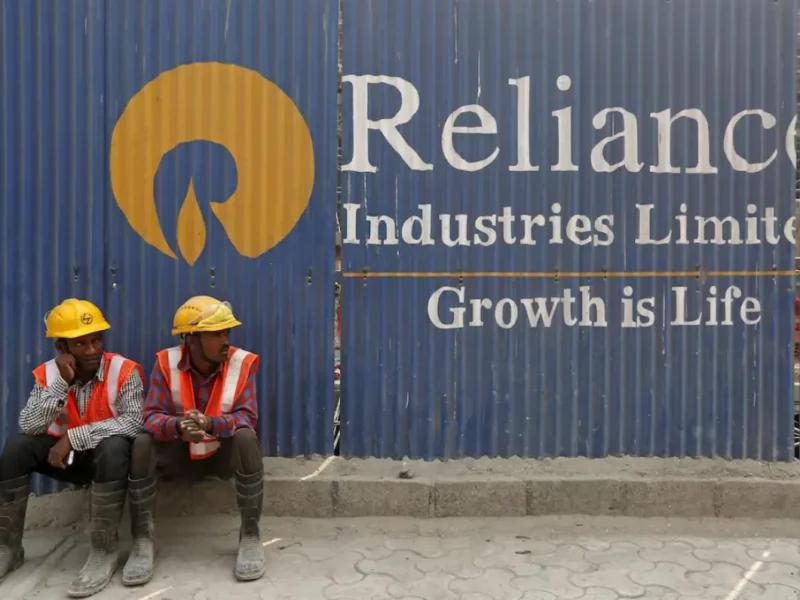
Layoffs At Tech Giants Are Actually Cyclical
By ARUL LOUIS
NEW YORK, NY (IANS) – The massive tech sector layoffs in big-name companies may have set off a wave of panic, but large-scale job cuts have been cyclical, dictated by the changing economic scenario.
Also, the big company jobs are only a portion of the tech jobs many of which are in unglamorous companies and government agencies outside the tech area and need workers to keep them running. In the current round of layoffs, the estimates of jobs lost range from 175,000 to 225,000 on a much bigger base.
And 225,000 layoffs are only 4.3 percent of the total US tech jobs which Statista puts at 5.2 million.
Of the total tech sector layoffs only a fraction of them will be Indian H1B workers – it is impossible that all of the layoffs will be of them.
However, the biggest threat to the estimated 400,000 Indians on temporary H1B work visas is the Green Card backlog that Congress has been unable to resolve.
The wait time for Green Cards, the permanent resident status, based on employment stretches to an impossible 90 years for Indians and the latest attempt to find a legislative solution died in the last Congress session despite having support across party lines and from President Joe Biden.
A Carnegie Endowment survey showed that 36 percent of the 400,000 H1B visa holders have already been on the visa for 10 years.
This puts them in limbo, making them vulnerable to not just the headline-making layoffs but the everyday ones that occur throughout the year in small numbers, while their children reach adulthood and lose their visa status.
The history of massive layoffs shows a cyclical pattern because of financial compulsions, business reorganization, and changes in technology.
The last massive retrenchment was during the Great Recession of 2009 which saw 174,000 jobs disappear, and before that during the 2001 Dotcom Bust, 695,581 workers were laid off, according to data from sources tracking the tech sector employment picture.
There are currently an estimated 400,000 Indians in the US on H1B visas, so only a fraction of them will be affected when contrasted against the overall numbers – it is an impossibility that all the layoffs are of Indians on temporary work visas.
IBM, which announced the elimination of 3,900 jobs on Wednesday had laid off nearly 10,000 workers in 2009.
Microsoft cut 14,000 jobs in 2014 and in 2009 announced plans to eliminate 5,000 positions, while the current round is for 10,000 jobs after having hired about 75,000 people in the last three years.
Even Google laid off at least 340 workers in 2009.
The 2009 layoffs were due to causes beyond the tech sector resulting from financial industry meltdowns and the housing sector bust that bled into technology.
The 2001 job cuts were because of the overvaluation of the tech sector and the realization that it could not live up to the hyped-up promises.
The factors behind the current layoffs are a combination of the two — the effect of the economic downturn that can be ascribed to the Covid fallout, the inflation, the higher interest rates and even the collateral effects of the Ukraine war, and to the overbuilding in the tech sector in the last two years on what turned out to be a temporary phase.
Shares of Alphabet, the Google company now, were down 39 per cent last year, Microsoft shares lost 33 per cent, and Meta, the Facebook company, lost about 70 per cent of its value.
Such bloodletting of jobs will happen again because of US business that is driven by pressures to show financial results in the short term as well as the changes in technology and demand.
Another perspective on the current layoffs is that technology employment is not confined to the tech giants grabbing sky-is-falling headlines.
A larger number of technology workers are employed by banks, insurers, telecom companies, retailers, health service providers, manufacturers, government departments and agencies right down to municipalities, and so many others.
These have not seen similar cuts of technology workers.
In fact, Indian technology outsourcing companies like Infosys and Tata Consultancy provide workers on contract to a range of US companies have slowed hiring, but not announced massive layoffs.
Tech sector managers said that there are lots of jobs open for technology workers outside of the big tech companies – these are positions in the technology operations that gird the companies far removed from pure technology.
They lack the glamour of the companies like Alphabet (Google), Microsoft, and Meta with very high salaries – the median salary at Alphabet and Meta was over $290,000 last year – and perks like free gourmet food and even laundry service that Meta recently ended.
But the tech jobs elsewhere pay well, between $85,000 to over $200,000 depending on the skills, the managers said.
The availability of certain types of tech jobs was also reported by CNBC quoting a survey by the employment website Indeed.
It found that overall, eight of the ten jobs with the best prospects this year were in the tech sector and included positions in the areas of cloud computing, site reliability, machine learning and product design areas.
Another issue for job-seekers, they said, was that many of the jobs on offer were contract positions because the companies wanted to have the flexibility to shed jobs without announced layoffs of staff and also to not have to offer perks.
A manager who did a quick sampling of postings for some categories of technology workers said that at the associate level, there were about 5,500 open positions for Java developers, and over 25,000 for programmers.
A manager who started out as a programmer in the 1990s and survived the 2001 and 2009 layoffs unscathed and rose through the ranks successively at a bank, a health insurer and a telecom company said that it was essential for tech workers to constantly upgrade their skills and acquire competency in new technologies.
The only layoff the manager faced was in 2019 when there was a reorganization in the company that he worked for at that time.
Despite the availability of tech jobs, a problem laid-off workers on H1B visas face are that they have 60 days to find a new position and have the new employer petition for a similar visa for them.
A longer-range threat to technology jobs comes from automation, a manager said citing the quality assurance and testing areas where automated processes have reduced the number of jobs.
But a recession as severe as in 2009 could also impact tech workers as it would all other workers in their companies.




